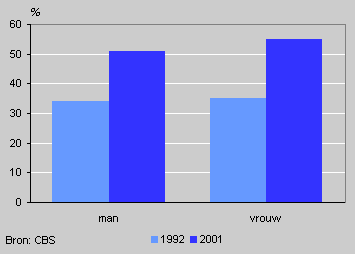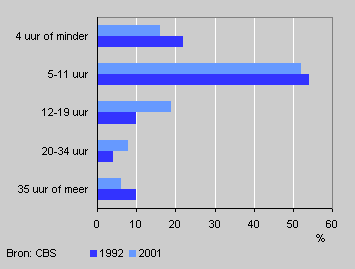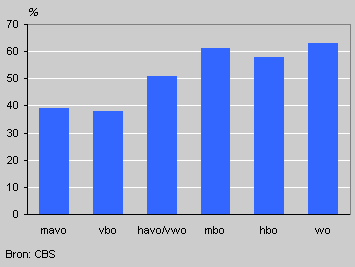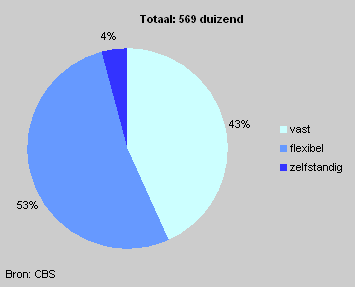More working students and pupills

There was a substantial rise in the proportion of working pupils and students between 1992 and 2001. As education, is their primary activity, two-thirds of working pupils and students have a job of less than twelve hours a week. The number of jobs of between 12 and 34 hours for this category of workers has doubled in the space of ten years.
Working students and pupils aged 15-24 years by sex

More than half of students have a job
In 2001 more than half of 15-24 year-olds in full-time education also had a job. Girls and women were more likely to work alongside their studies than their male peers. Overall, nearly 570 thousand pupils and students have a job. This was a substantial increase on 1992, when just over a third of young people had a job alongside their studies.
Working students and pupils aged 15-24 years, by weekly working hours

Twice as many jobs of 12-34 hours
Working pupils and students usually work for a few hours a week: in 2001 two-thirds worked for less than twelve hours a week. In 1992 three-quarters of full-time pupils and students had a job of less than twelve hours a week. Compared with 1992, the share of jobs of between 12 and 34 hours doubled.
Working students and pupils aged 15-24 years, by level of education, 2001

More jobs for students in higher education
University students are most likely to work alongside their studies. In 2001, 63 percent of them had a job. Six out of ten students in senior vocational education (mbo) had a job, and 38 percent of pupils at junior secondary and pre-vocational level (mavo/vbo) worked alongside school in 2001.
Working students and pupils aged 15-24 years, by type of contract, 2001

Often flexible jobs
More than half of working pupils and students have a flexible contract, i.e. for shorter than a year or for a variable number of hours a week. Six out of ten flexible workers work via a temp agency, are standby workers or replacement workers.
Sabine Lucassen